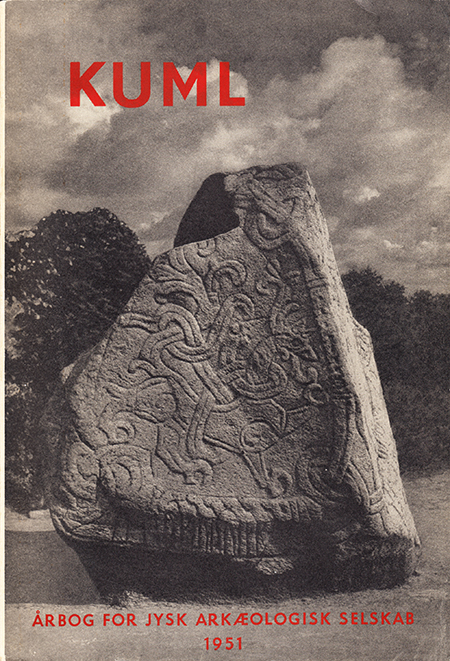Hemdrup runestav
DOI:
https://doi.org/10.7146/kuml.v1i1.24761Nøgleord:
Runer, Runestav, HemdrupResumé
The Hemdrup rune-stave
In the course of peat cutting in Næsborg bog (Slet riding, North Jutland) in 1949 a yew stick was discovered (fig. 1), and found to bear two rune inscriptions (figs. 4 and 5) as well as various carved figures (including dogs and the figure of a woman; figs. 3, 4, 5 and 6) and designs (including a triskele; fig. 7). The archaeological and runological evidence appears to date the Hemdrup stave to the period 900-1000 (perhaps 1050) AD. Of the two runic inscriptions, the one, which can be read uanÞikiba I f I iukati I ąsa I auaąuri, may be interpreted: "(This) turnstave is owned by F; Atte carved (the runes); Åse, Ave's (Or grandfather's) money (i.e. treasure)".
The stick can be identified, both from this interpretation of the inscription and from its appearance and ornamentation as a cattle herd's stick, i.e. a throwing stick. Throwing sticks (of which a number of dialect names are known) of this type were used up to our own day by Danish herdboys when watching cattle (figs. 11-14). By throwing such a stick the cattle could be stopped or guided. A number of throwing sticks from modern times are described, decorated with carvings of various types, showing parallels in many details to the ornamentation of the Hemdrup stave.
Peter Skautrup
Downloads
Publiceret
Citation/Eksport
Nummer
Sektion
Licens
Fra og med årgang 2022 er artikler udgivet i Kuml med en licens fra Creative Commons (CC BY-NC-SA 4.0).
Alle tidligere årgange af tidsskriftet er ikke udgivet med en licens fra Creative Commons.


